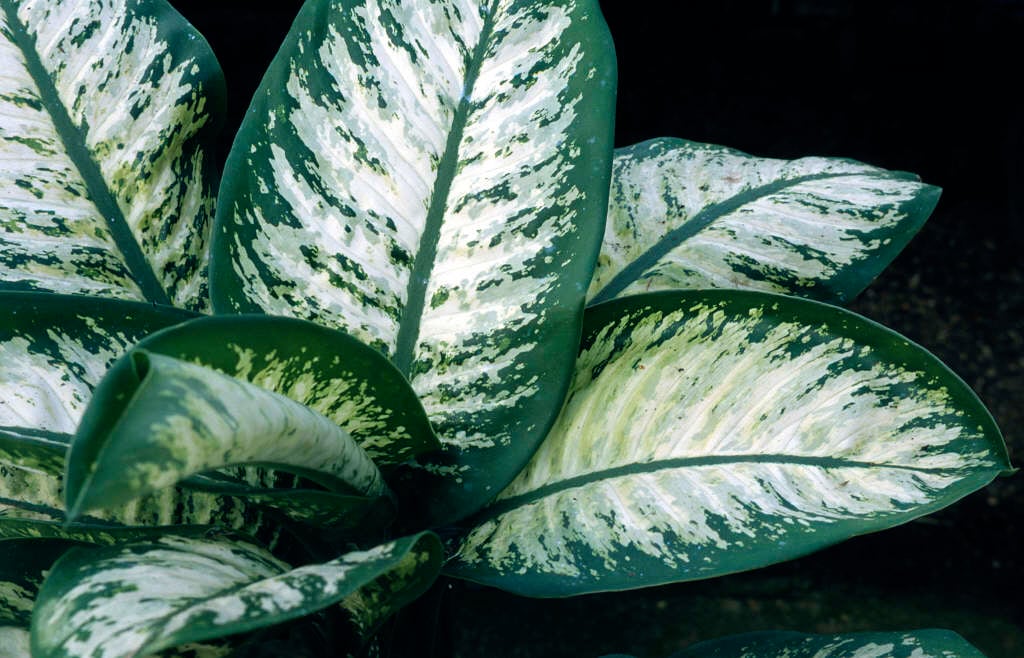Not the plant you're looking for? Search over 300,000 plants
Conservatory GreenhouseHouseplants
Size
Ultimate height
1–1.5 metresTime to ultimate height
5–10 yearsUltimate spread
0.1–0.5 metresGrowing conditions
Chalk
Clay
Loam
Sand
Moisture
Moist but well–drainedpH
Acid, Alkaline, NeutralColour & scent
| Stem | Flower | Foliage | Fruit | |
| Spring | Cream Green | |||
|---|---|---|---|---|
| Summer | Cream Green | |||
| Autumn | Cream Green | |||
| Winter | Cream Green |
Position
- Partial shade
Aspect
East–facing or South–facing or West–facing
Exposure
Sheltered Hardiness
H1ABotanical details
- Family
- Araceae
- Native to GB / Ireland
- No
- Foliage
- Evergreen
- Habit
- Bushy
- Potentially harmful
- TOXIC if eaten, skin/eye irritant. Wear gloves and other protective equipment when handling TOXIC to pets - see the HTA guide to potentially harmful plants for further information and useful contact numbers
- Genus
Dieffenbachia are evergreen perennials with large, ovate leaves which are usually attractively mottled with white or yellow; flowering spathes are seldom produced in cultivation
- Name status
Accepted
How to grow
Cultivation
Under glass grow in peat-free, loam-based potting compost in bright filtered light with high humidity. Water moderately and apply a balanced liquid fertiliser monthly when in growth and keep just moist in winter
Propagation
Propagate by root tip cuttings in spring or summer or by air layering
Suggested planting locations and garden types
- Patio and container plants
- Low Maintenance
Pruning
No pruning required
Pests
May be susceptible to aphids
Diseases
Generally-disease free
Get involved
The Royal Horticultural Society is the UK’s leading gardening charity. We aim to enrich everyone’s life through plants, and make the UK a greener and more beautiful place.
